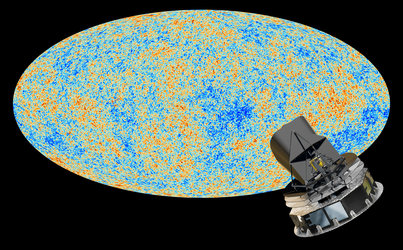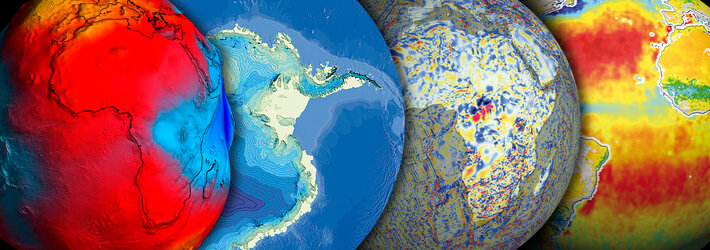GOCE Mission Scientist: Interview with Mark Drinkwater
Mark Drinkwater has been involved with the design and development of the GOCE Earth Explorer mission since it was selected for implementation at the end of the 1990s.
As Mission Scientist, his role in supporting the mission preparations has been to ensure that the satellite and ground data processing systems are compatible with achieving the mission objectives, and in particular the oceanographic goals of the mission.

Mark Drinkwater, a British national, moved from NASA JPL to ESA's European Space Research and Technology Centre (ESTEC) in the Netherlands in May 2000 to contribute to preparation of the first Earth Explorer missions CryoSat and GOCE.
Drinkwater obtained a BSc degree at the University of Durham, UK, and PhD in Geophysics from the University of Cambridge.
ESA: What has your responsibility been throughout the development of the GOCE mission?
Mark Drinkwater
As Mission Scientist I have been involved with GOCE since establishment of early concept feasibility, through formation of the Project and the industrial design and development phase, and now ultimately the launch and early operations phase. My responsibility has been to support of the early consolidation of the design and the satellite development phase, to ensure that GOCE is coherent with its primary mission objectives. During satellite commissioning we will also support the calibration and validation activities to help ensure that GOCE delivers the best quality data to the science community.
ESA: How important is it involving the science community with the development of a mission such as GOCE?
Mark Drinkwater
Maintaining the active involvement of external scientists is fundamental to ensuring that we meet the original intended objectives of each Earth Explorer mission - and in doing so fulfil the expectations of the scientific user community. Throughout the GOCE preparations I have been responsible for managing the interface with the external science community and running the advisory body known as the GOCE Mission Advisory Group. This group has collectively dedicated a decade or more to ensuring we can achieve an effective balance between new technology and harnessing recent scientific progress. Meanwhile, by organising and hosting International Workshops and publishing results of those preparations we have strived to engage and build a broad scientific user community which eagerly await GOCE data.
ESA: GOCE will exploit new technology in space but what have been the biggest challenges from a science perspective?
Mark Drinkwater
From the early GOCE mission concept, one of the principal challenges has been to launch scientific studies with which to assess the performance of the proposed suite of GOCE instruments, and to quantify the potential scientific benefits of its new measurement principles. With the launch, the most significant new challenge will be to ensure that we effectively communicate the benefits of its gravity data, and that we prepare the science community and properly equip them for use of 'quality assured' data products.
ESA: How will GOCE advance our understanding of ocean circulation and why is this important?
Mark Drinkwater
Ocean circulation is a fundamental element of the global heat engine and is a key process to capture in climate forecast models. Currents transport large quantities of heat polewards from the Equator, and in doing so, keep Europe's climate relatively mild. Together with more than 15 years of existing ESA ocean altimetry data, the new GOCE high-resolution reference geoid will help more accurately measure the role of ocean currents in transporting heat and water around the globe. Building on the original intent of the World Ocean Circulation Experiment (WOCE), this powerful combination was one factor which helped to justify its namesake the GOCE mission.
GOCE promises to deliver a number of unique firsts. Its high resolution gravity-gradient data promise to revolutionise our picture of Earth’s gravity.
ESA: What other benefits to science will GOCE bring?
Mark Drinkwater
As ESA’s gravity mission, GOCE promises to deliver a number of unique firsts. Its high resolution gravity-gradient data promise to revolutionise our picture of Earth’s gravity. Unprecedented accuracy and resolution will enable other climate applications relating to accurate measurement of sea-level rise; studies of the physics of Earth’s interior particularly in regions of natural earthquake and volcanic hazards; and in practical surveying and other geodetic applications.
ESA: Where will you be for launch?
Mark Drinkwater
I plan to attend the launch event at ESRIN. Together with international guests and Press, I relish the prospect of celebrating a successful opening of this first chapter of ESA’s Living Planet Programme.
Editor's note:
This is one in a series of interviews with a few of the key people that are involved in the GOCE mission. Please check back as the list will be added to over the coming weeks.





